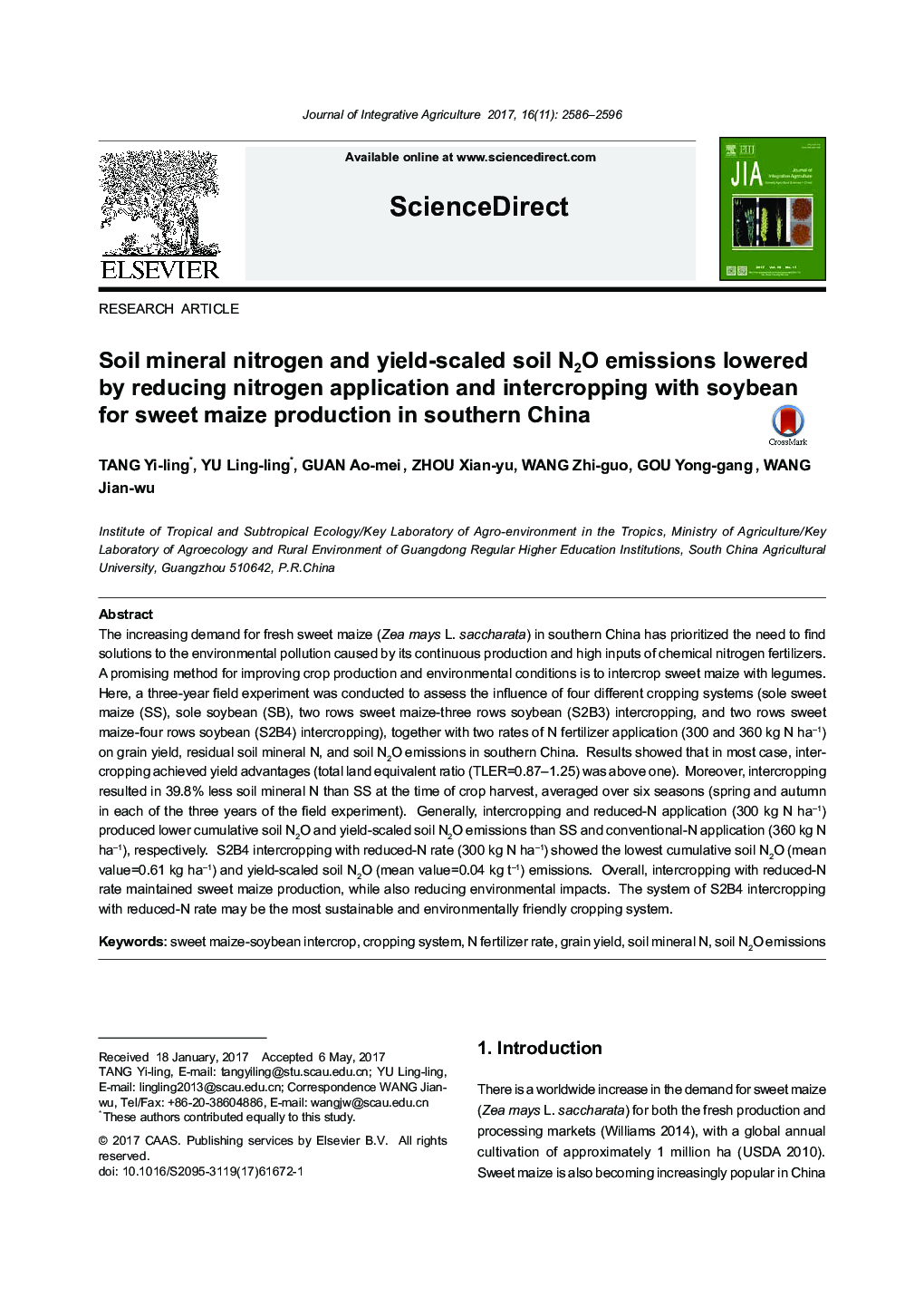| Article ID | Journal | Published Year | Pages | File Type |
|---|---|---|---|---|
| 8875816 | Journal of Integrative Agriculture | 2017 | 11 Pages |
Abstract
The increasing demand for fresh sweet maize (Zea mays L. saccharata) in southern China has prioritized the need to find solutions to the environmental pollution caused by its continuous production and high inputs of chemical nitrogen fertilizers. A promising method for improving crop production and environmental conditions is to intercrop sweet maize with legumes. Here, a three-year field experiment was conducted to assess the influence of four different cropping systems (sole sweet maize (SS), sole soybean (SB), two rows sweet maize-three rows soybean (S2B3) intercropping, and two rows sweet maize-four rows soybean (S2B4) intercropping), together with two rates of N fertilizer application (300 and 360 kg N haâ1) on grain yield, residual soil mineral N, and soil N2O emissions in southern China. Results showed that in most case, intercropping achieved yield advantages (total land equivalent ratio (TLER=0.87-1.25) was above one). Moreover, intercropping resulted in 39.8% less soil mineral N than SS at the time of crop harvest, averaged over six seasons (spring and autumn in each of the three years of the field experiment). Generally, intercropping and reduced-N application (300 kg N haâ1) produced lower cumulative soil N2O and yield-scaled soil N2O emissions than SS and conventional-N application (360 kg N haâ1), respectively. S2B4 intercropping with reduced-N rate (300 kg N haâ1) showed the lowest cumulative soil N2O (mean value=0.61 kg haâ1) and yield-scaled soil N2O (mean value=0.04 kg tâ1) emissions. Overall, intercropping with reduced-N rate maintained sweet maize production, while also reducing environmental impacts. The system of S2B4 intercropping with reduced-N rate may be the most sustainable and environmentally friendly cropping system.
Related Topics
Life Sciences
Agricultural and Biological Sciences
Agricultural and Biological Sciences (General)
Authors
Yi-ling TANG, Ling-ling YU, Ao-mei GUAN, Xian-yu ZHOU, Zhi-guo WANG, Yong-gang GOU, Jian-wu WANG,
